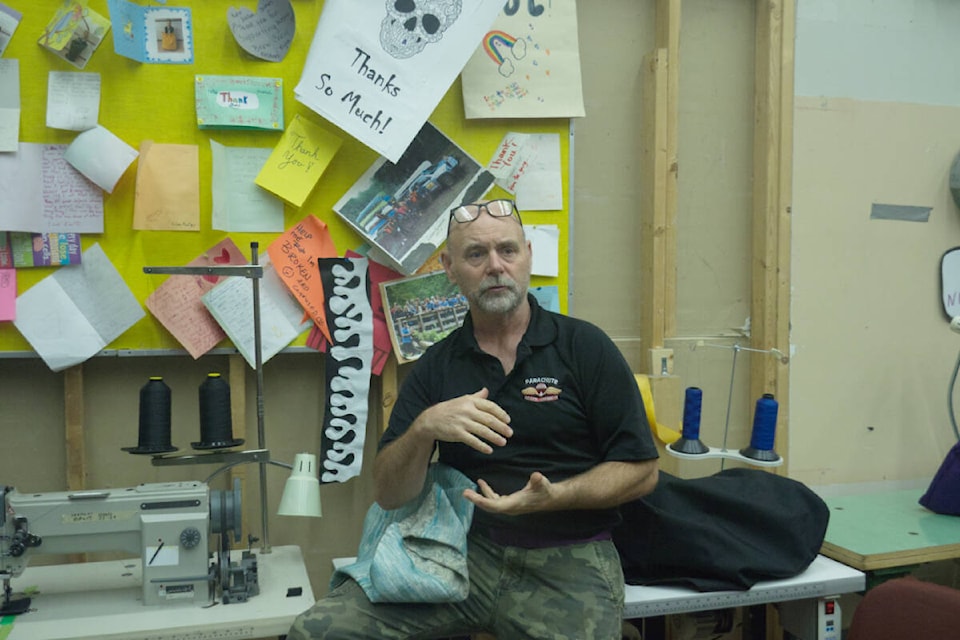School is in session in the confines of Vertical Madness, as Rob Macneill is heading a course on industrial sewing. The course is put on in partnership with North Island College and Excel Career College of Courtenay.
With a class of 13 students and ages ranging from 18 to 62, Macneill is thrilled to teach the basics of industrial sewing for his enthusiastic pupils.
“It’s really cool,” said Macneill. “It’s day one of this course and we don’t know how it’s going to turn out. But these guys are already like ‘ok, let’s go.’”
The first week is about teaching the students the basic stitching of industrial sewing.
Types of stitching include a basic straight stitch seam. This is the most essential stitch for most sewing projects. Mostly commonly used to sew two pieces of fabric, it can also be used to sew a few stitches in revers at the beginning and end of a seam in order to secure loose ends.
“You would see this on any piece of furniture,” said Macneill. “You would see it on most types of boats as well.”
The second type of stitching students will run will be a single stitch seam off the single stop stitch, which Macneill says you might see on furniture.
Moving on, next is a double seam with a double top stitch. This type of seam is similar to a plain seam, but with a second seam sewn between the first and the raw edges of the seem. This is to allow a stronger seam for the fabrics being sewn together, as well as to keep it from fraying.
“You’d see this in any type of car,” said Macneill. “It’s what is used in the automotive industry. On a car. Any car old or new on the car seats.”
Other techniques in the first week of the eight week course will include piping and sewing three different types of zippers.
Piping is a type of sewing trim formed by sewing a thin strip of folded binding into a tube and fastening it to the edge of fabric. This type of edging includes what you’d see on the seats of cars or industrial aircraft, to close the two pieces of fabric as they form the outer contours of a seat.
The types of zippers will include a type of zipper you may see on a cushion. As well as the zippers you’d see on a exercise mat and a hidden zipper. Hidden zippers may include an overhang, a technique you might see on a backpack.
“Overhangs allow a liquid, like water to right over-top the zipper and not get inside,” said Macneill.
